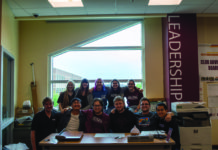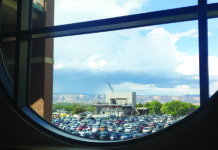Campus has seen a lot of growth in its food bank, officially known as The Pantry, located on the first floor of Lowell Heiny Hall.
At first, it relied on donations and offered limited help to students as it could only support so many people. Since then, the Caf has been donating leftovers to the food bank to provide frozen meals for students.
The staff and organizers of The Pantry are incredibly helpful and friendly. It makes a huge difference that they care deeply about the students and want to be sure they have access to basic needs.
This is great for students who are facing food insecurity and for students who are in need of a meal when campus amenities are not available.
One of the biggest concerns with this is the overwhelming amount of food that was still being thrown away. We can now see how much food The Caf is truly wasting because of this project. The benefit here, however, is that more students are able to get food because of this. Administration is also planning on adding more freezers in different buildings around campus to hold even more food, which is one way to solve the issue.
Moreover, it is unreasonable to assume Colorado Mesa University can feed every student for free, and they have provided a great number of resources for students who consistently struggle to put meals on the table.
One of the downsides of this is the inaccessibility during certain hours. In order to access The Pantry, one must fill out a food request form and then wait for approval. It is hard to plan when a meal is going to be missed.
Though the Swipe Out Hunger initiative is one of the solutions for finding food during untimely hours, it’s closed on the weekends; otherwise, its hours are limited to the times that campus dining services are open.
There are a few ways to handle this. A worker can be placed at the door of The Pantry and field students and how much they take. This would have to happen throughout the weekends as well. The concern with this solution is the pay, but it can be argued that there is more than enough money in the work-study funds to hire a few people for such a critical job.
Currently, around 30-50 students use this amenity a week, though this is just an estimate, as the program values the privacy of its users. These numbers are based on how much food is given away each week as well as how many meal swipes are used for the Swipe Out Hunger program.
Because of how few people use the program, another thing that can be improved upon is advertising. There are a few posters around campus, but using social media and campus-wide emails to promote The Pantry would be helpful so students know about the resource.
It is not enough to simply have a food bank, it needs to be widely shared so there is equal opportunity.
The Pantry plans on starting new projects for the summer, including adding healthier options for students, cooking classes with food provided for summer residents and feminine hygiene products. These are all incredibly notable as it reaches out to the needs of all students.
Though, future projects to reduce food insecurity should include the Montrose and Western Colorado Community College campuses as they face higher rates of food insecurity than the main campus.
Overall, The Pantry is a great thing to have and it should be recognized that people have worked hard on this project. There will always be room for improvement, but that should not take away from the incredible amount of work put into these projects.






